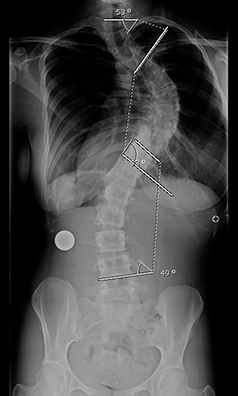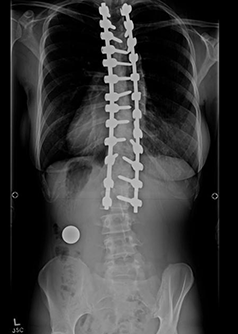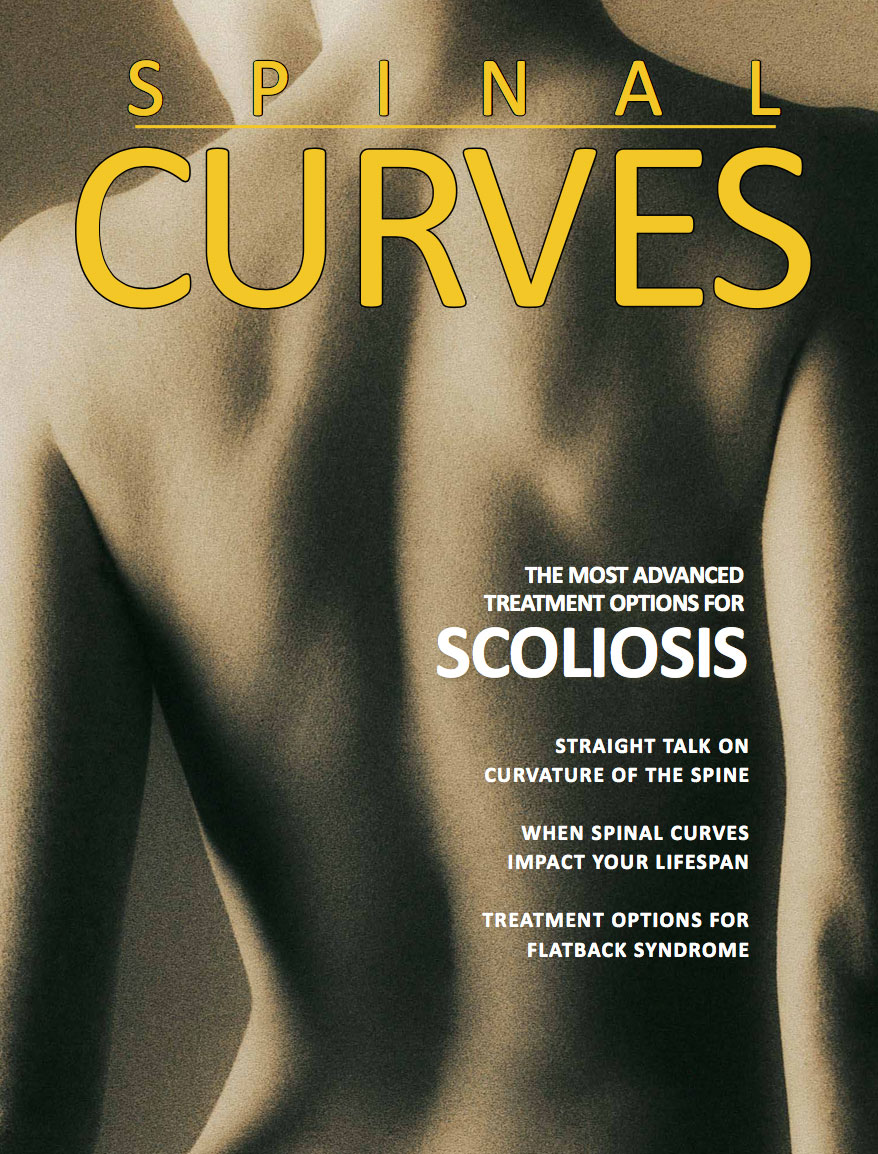Traditional Scoliosis Treatment Options
The treatment options for scoliosis fall into three main categories: observation of the scoliosis, nonoperative treatment and surgical treatment.

- Observation: This is for curves that have a small degree measurement when you are growing (adolescent scoliosis), or for moderate size curves (< 40 degrees) when you are done growing. For adults, observation and physical therapy are for those patients who have mild symptoms and have curves which are not large.
- Bracing: This is for curves between 25 and 40 degrees in growing children to prevent further progression of the curve while growth of the spine remains. The goal of bracing is to prevent further progression since the brace cannot correct curves.
- Physical Therapy: Physical therapy is a discipline based on movement, conditioning, and manipulation, that offers tangible benefits in terms of short term and long term pain relief. Though not shown to alter the natural history of curve progression, physical therapy can help with pain and imbalance issues associated with scoliosis.
- Injection Treatment: In patients with scoliosis in their young adult stage, or their older adult stage, often there is pain related to the scoliosis. This often can be treated by physical therapy or the judicious use of injection treatments. These can be directed at either painful facets, discs, or nerves. These injections should be administered by a physician skilled in the non-operative treatment of patients with scoliosis.
- Growing Constructs: Occasionally, very young children can present with scoliosis, either infantile idiopathic, young juvenile idiopathic, congenital, or associated with a soft tissue, bony, or neuromuscular syndrome. Grow constructs, either titanium ribs (VEPTR), Shilla constructs, Harms constructs, MAGEC rods, or traditional growing rods can provide curve correction as the spine is growing. The goal is to preserve spine growth, and more importantly, thoracic cage growth and lung function.
- Open Surgical treatment: Surgical treatment is reserved for curves which are generally greater than 40-50 degrees for adolescent patients and young adults. In older adults, surgery is usually reserved for progressive curves, curves that alter spinal balance, and curves that cause pain from either collapse or degeneration. Surgery can be performed for smaller curves if the appearance of the curvature (deformity or imbalance) is bothersome to the patient or if symptoms (decreased lung capacity, pain) are associated with the scoliosis. Long term, surgery can help if there is degeneration of the scoliosis, or the low back below the scoliosis is wearing out in the adult patient. The final reason can be progressive focal or global spinal imbalance.
The goals of scoliosis surgery, performed by Dr. Geck in Austin Texas, are to obtain curve correction and to prevent curve progression, thus improving the patient's future potential for pain and deformity. This is generally achieved by placing metal implants onto the spine which are then attached to rods which correct the spine curvature and hold it in the corrected position until fusion, or knitting of the spine elements together.
 |
 |
Open, high density, 4th generation spinal reconstruction with Ponte osteotomies is currently the gold standard in scoliosis and Scheuermann’s kyphosis surgery.
In the past (1st, 2nd, and 3rd generation techniques, 20-60 years ago) there was a significant complication rate.
However, research shows that an experienced surgeon (over 10 years experience, scoliosis focused practice) can have a complication rate of less than 3% using 4th generation techniques for adolescent idiopathic scoliosis (AIS). This effect of experience is so powerful, that it actually creates better patient reported outcomes (PRO scores), which translates into happier, more functional patients post operatively.
The overall results of surgical treatment of scoliosis shows correction of deformity, and global improvements in pain scores, patient reported outcomes, patient reported function, and health related quality of life as compared to untreated scoliosis patients.






